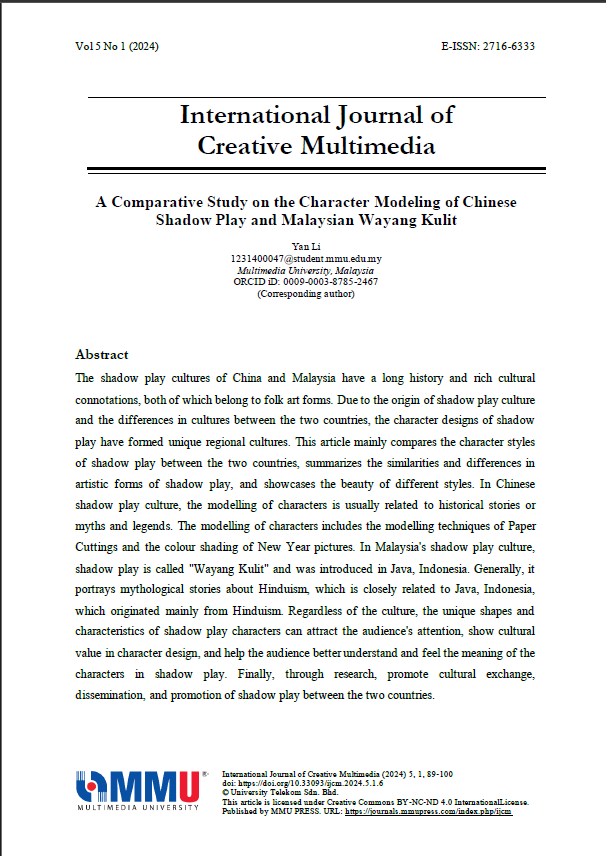A Comparative Study on the Character Modeling of Chinese Shadow Play and Malaysian Wayang Kulit
Main Article Content
Abstract
The shadow play cultures of China and Malaysia have a long history and rich cultural connotations, both of which belong to folk art forms. Due to the origin of shadow play culture and the differences in cultures between the two countries, the character designs of shadow play have formed unique regional cultures. This article mainly compares the character styles of shadow play between the two countries, summarizes the similarities and differences in artistic forms of shadow play, and showcases the beauty of different styles. In Chinese shadow play culture, the modelling of characters is usually related to historical stories or myths and legends. The modelling of characters includes the modelling techniques of Paper Cuttings and the colour shading of New Year pictures. In Malaysia's shadow play culture, shadow play is called "Wayang Kulit" and was introduced in Java, Indonesia. Generally, it portrays mythological stories about Hinduism, which is closely related to Java, Indonesia, which originated mainly from Hinduism. Regardless of the culture, the unique shapes and characteristics of shadow play characters can attract the audience's attention, show cultural value in character design, and help the audience better understand and feel the meaning of the characters in shadow play. Finally, through research, promote cultural exchange, dissemination, and promotion of shadow play between the two countries.
Article Details

This work is licensed under a Creative Commons Attribution-NonCommercial-NoDerivatives 4.0 International License.

